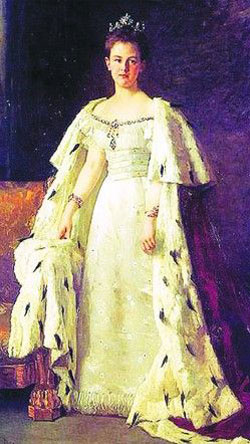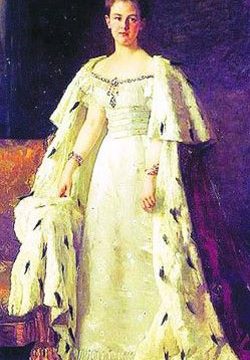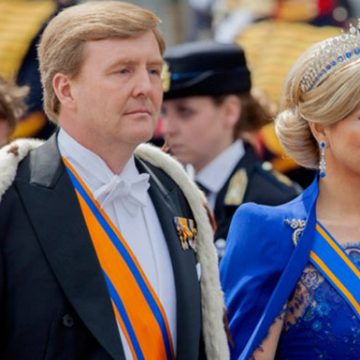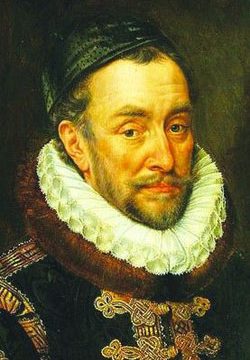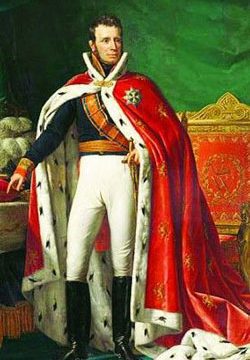Courtesy of: the Morning News
The eagerly-anticipated arrival of HRM King Willem-Alexander, the first Dutch king since 1890, has elicited a frenzy of preparation on Aruba. Two days of royal events, from the official greeting in Oranjestad this morning and a spectacular evening show at Bushiribana ruins this evening, to a demonstration of island spirit tomorrow morning by all elementary school children, are open to the public and will be filled with all the pageantry Aruba can muster.
The island is the last leg of a six-island tour of the Dutch Caribbean territories by HRM King Willem-Alexander and his wife, Queen Maxima; this is also the first time since 1890 that both a king and queen have sat on the throne.
Like England, the royal family is a tradition that the populace of the nation cherishes and reveres. A formal Dutch Monarchy has only existed since March of 1815, but it was “governed” by a heredity head of state from the House of Orange-Nassau since 1559.
It was in that year that King Philip II of Spain appointed William of Orange as “stadtholder” of the “low countries” of the Netherlands. Literally translated “place holder,” it was a term for a “steward” or “lieutenant”, in the Low Countries and it is comparable with the French title Lieutenant and England’s 16th century Lord Lieutenant. The position was tasked with maintaining peace and provincial order in the early Dutch Republic.
William I, Prince of Orange was known as William the Silent or simply William of Orange. After his appointment he went on to become the leader of the Dutch revolt against Spain, sparking the Eighty Years’ War and formal independence of the United Provinces in 1648. He was born in the House of Nassau as Count of Nassau-Dillenburg. He became Prince of Orange in 1544 and the founder of the branch House of Orange-Nassau and the ancestor of the monarchy of the Netherlands. The wealthy nobleman, William originally served the Habsburgs as a member of the court of Margaret of Parma, governor of the Spanish Netherlands. He was unhappy with the centralization of political power away from the local estates and the Spanish persecution of Dutch Protestants. He joined the Dutch uprising against his former masters. The most influential and politically capable of the rebels, William I led the Dutch to several successes in the fight against the Spanish. He was finally declared an outlaw by the Spanish king in 1580, and assassinated in Delft four years later.
His descendents inherited the position of Stadtholder of the Dutch Republic, Stadtholder William III, married to Mary Stuart, daughter of Jacob II, King of England, was crowned king of England in 1689 and resided alternately in England and the Netherlands. His death in 1702, without heirs, meant the end of his family holding in the office of stadtholder for a time.
Willem Karel Hendrik Friso, later to be known as William IV, was born in Leeuwarden, Netherlands, the son of John William Friso, Prince of Orange, and head of the Frisian branch of the House of Orange-Nassau. He was restored to the position in 1747, but died only four years later. He was the grandfather of Holland’s first king.
Eventually, William V assumed the position and that of Captain-General of the Dutch States Army in 1766. He led the Government of the Dutch Republic in London from 1795 to1806. It was the son of William V, Prince Willem Frederik, who finally was crowned, and titled William I, King of the Netherlands. This came about following the wars with Napoleon and the French conqueror’s defeat. Willem Frederik had fought on the side of Austria and the “Low Countries.” The Netherlands had been annexed to the French Empire by Napoleon in 1810, but after Napoleon’s defeat at Leipzig in 1813, the French troops withdrew. While his father was Stadtholder, and retained the title of Prince, Willem Frederik was known as the “Hereditary Prince.” When William V died in 1806, William I inherited the title and his father’s claims on the inheritance of the Nassau lands.
In 1813, cities all over Europe were evacuated by the French occupation troops. In the power vacuum created, a number of former Orangist politicians and Patriots formed a provisional government in November of 1813. Although several of the members of the provisional government had helped drive out William V eighteen years earlier, it was taken for granted that his son would have to head any new regime. They also agreed it would be better in the long term for the Dutch to restore him themselves, rather than have the Great Powers impose him on the country. The Dutch population was pleased with the departure of the French, who had ruined the Dutch economy, and this time welcomed the prince. The constitution offered William extensive, nearly absolute powers. Ministers were only reporting to him, while a unicameral parliament exercised only limited power. He was inaugurated as sovereign prince in Amsterdam. In August 1814, he was appointed Governor-General of the former Austrian Netherlands by the Allied Powers who occupied that country. He was also made Grand Duke of Luxembourg, having received that territory in return for trading his hereditary German lands to Prussia and the Duke of Nassau. William I fulfilled his family’s dream originating 300 years prior with his namesake, of uniting the Low Countries. Feeling threatened by Napoleon, who had escaped from Elba, William proclaimed the Netherlands a kingdom on March 16, 1815, at the urging of the powers gathered at the Congress of Vienna.
Holland is now preparing for their bicentennial celebration as the independent Kingdom of the Netherlands in 2015.
Willem Frederik became William IV and was proclaimed himself King of the Netherlands and Duke of Luxembourg. In June of 1826 he also became the Grand Duke of Luxembourg. From 1839 he was also the Duke of Limburg. After his abdication in 1840, in favor of his son, William II, he styled himself “King William Frederick, Count of Nassau.”
William III was the last King of the Netherlands for three generations. Wilhelmina, the only child of William III and his second wife, ascended the throne in 1890. Though he had three sons by his first wife, he outlived two of them, and only the childless Alexander remained when Wilhelmina was born. She was third in line for the throne, preceded by Alexander and her great uncle, Both died and she became Heir Presumptive when she was four-years-old. He mother, Emma, was named Regent until Wilhelmina took her place as Queen on September 5, 1898.Wilhelmina’s daughter Juliana and granddaughter Beatrix were the reigning monarchs until Beatrix’s abdication to her oldest son, HRM King Willem-Alexander.
Same as in England, the spouses of the queens of the realm take the title of “Prince Consort.”
HRM Willem-Alexander was inaugurated on April 30 of this year. Holland does not “crown” their king, but a simple procedure is conducted in the presence of ministers and leaders of the Dutch Territories, which included Aruba’s Prime Minister, Mike Eman.
The absolute rule of the monarchy has obviously changed with the times. As a Constitutional Monarchy, the role and position of the monarch are defined and limited by the constitution of the Netherlands. A rather large portion of the Dutch constitution is devoted to this. Roughly a third describes the succession, mechanisms of accession and abdication to the throne and the roles and responsibilities of the monarch, as well as the formalities of communication between the States-General of the Netherlands and the monarch in the creation of laws.
The first paragraph of Article 42 of the constitution determines that the government of the Netherlands consists of the monarch and his ministers. The monarch is, according to this article, not the head of government. The ministers are not answerable to the monarch within the government. There is no distinction, no dichotomy, no segregation or separation: the monarch and his ministers are the government and the government is one. This has practical consequences, in that it is not possible for the monarch and the ministers to be in disagreement. The government speaks with one voice and makes decisions as a united body. When the monarch acts in an executive capacity, he does so as representative of the united government. And when the government decides, the monarch is in agreement (even if the monarch personally disagrees). As an ultimate consequence of this, it is not possible for the monarch to refuse to sign into law a proposal of law that has been agreed to and signed by the responsible minister. Such a disagreement between the monarch and his minister is a situation not covered by the constitution and is automatically a constitutional crisis. These are quite rare in the Netherlands and have, on occurrence, always led to collapse of the government (resignation of the ministers), parliamentary elections and eventually, possible abdication of the monarch.
The second paragraph of article 42, basically renders the monarch powerless. It states that “the monarch is inviolate. He is beyond any reproach, beyond the grasp of any prosecution (criminal or otherwise) for any acts committed or actions taken as monarch. If anything goes wrong, the minister responsible for the topic at hand is responsible for the failings of the monarch.” This sounds like it makes the monarch an absolute tyrant, but it is the opposite. Since the ministers are responsible, they also have the authority to make the decisions. The ministers set the course of the government and the country, make executive decisions and run the affairs of state. Since the government is one, the monarch abides by the decision of the ministers.

